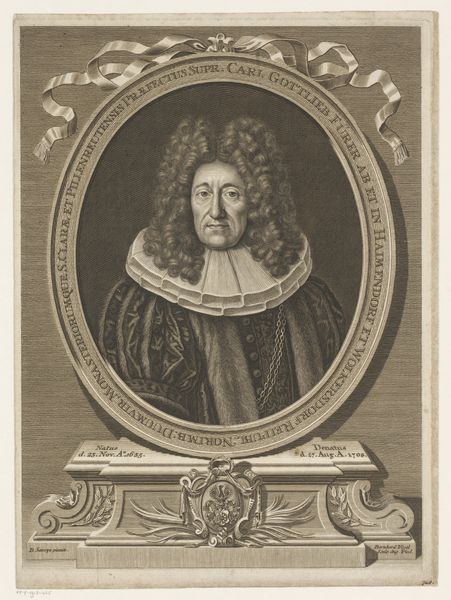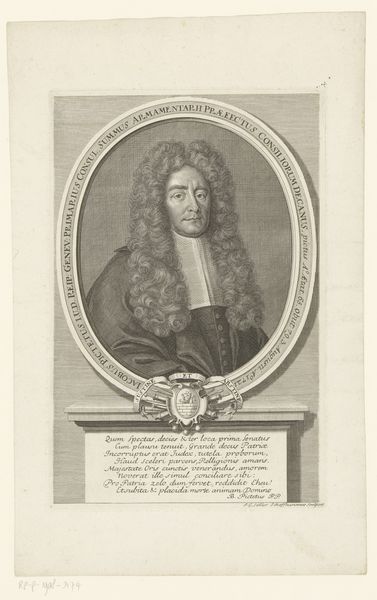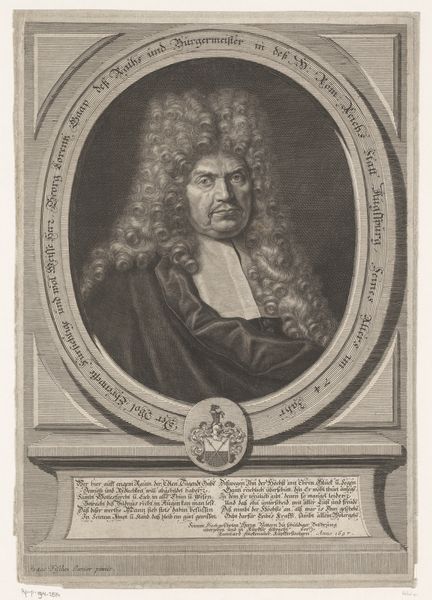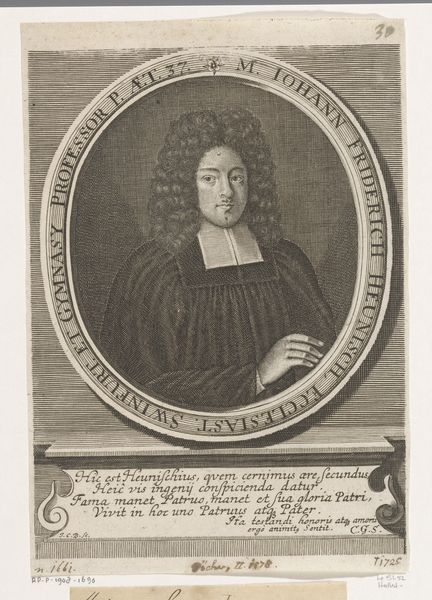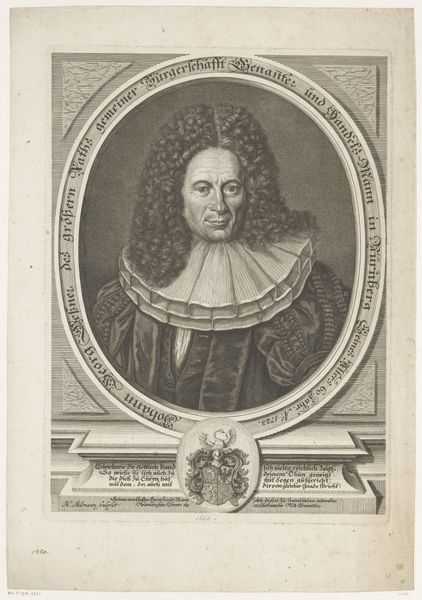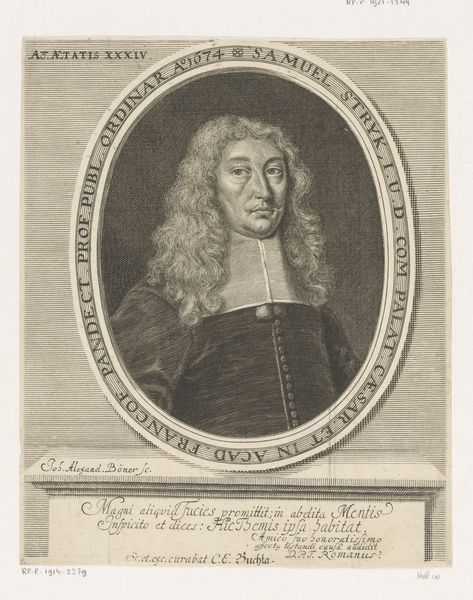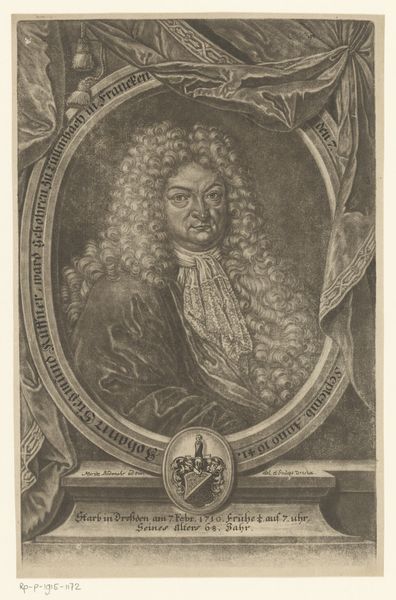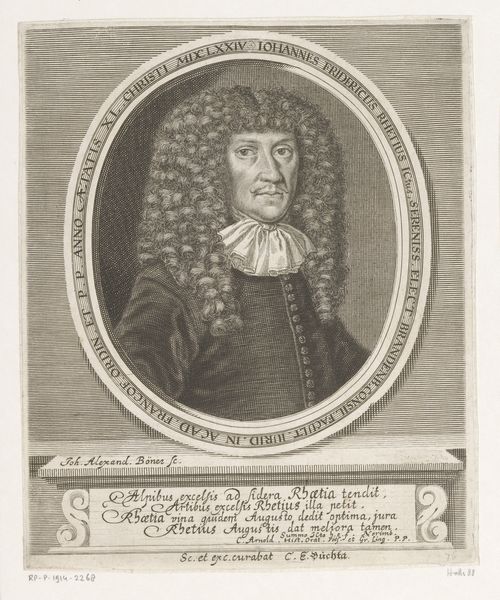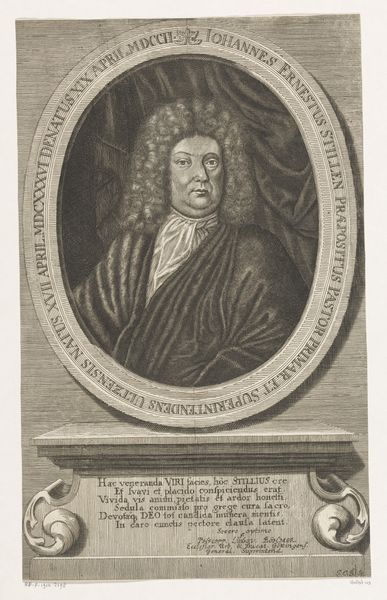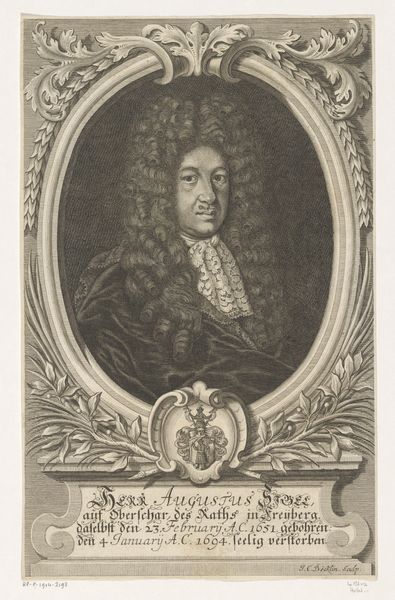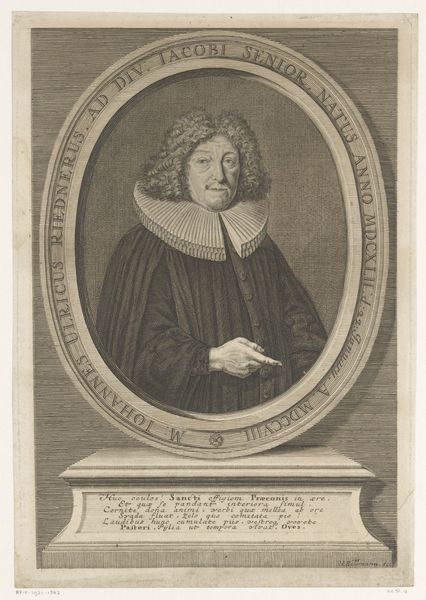
drawing, print, engraving
#
portrait
#
drawing
#
baroque
# print
#
old engraving style
#
form
#
historical photography
#
line
#
engraving
Dimensions: height 168 mm, width 117 mm
Copyright: Rijks Museum: Open Domain
This print, portraying Camillo Silvestri, was made in the 18th century by an artist known only by the monogram A.B. It's an engraving, meaning the artist would have used a tool called a burin to carve lines into a metal plate, likely copper. The material of the copper plate influences the aesthetic. The fine lines are able to capture a tremendous amount of detail, from the elaborate wig to the texture of the sitter's skin. The linear quality of the engraving lends a sense of precision and formality, befitting the status of the sitter. Consider the labor involved: each line carefully etched by hand. Prints like these, though relatively reproducible, still required skilled craftsmanship. They played a crucial role in circulating images and ideas, but also reflect a hierarchical society, where meticulous handwork served to represent those in positions of power. Appreciating the process and the material helps us understand the print's social context and artistic value.
Comments
No comments
Be the first to comment and join the conversation on the ultimate creative platform.

